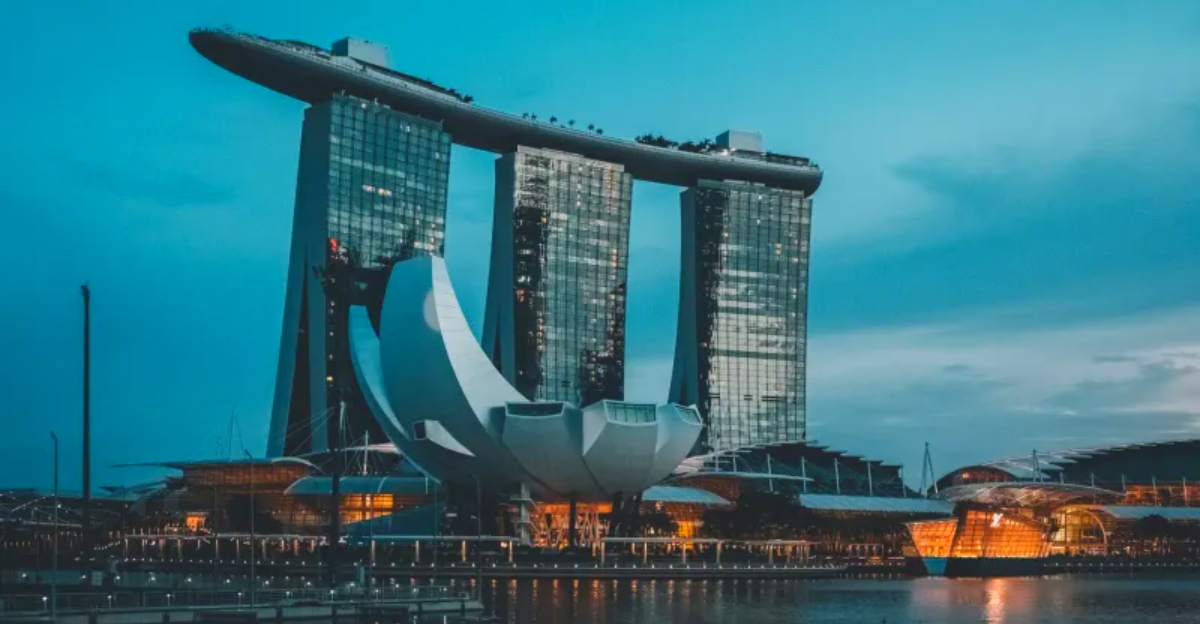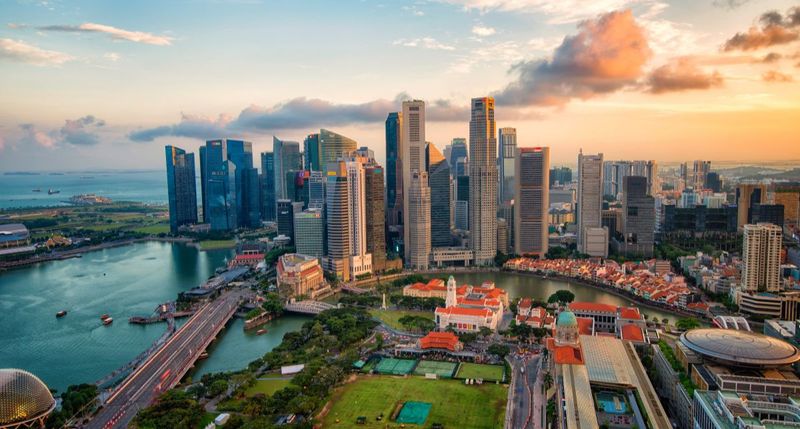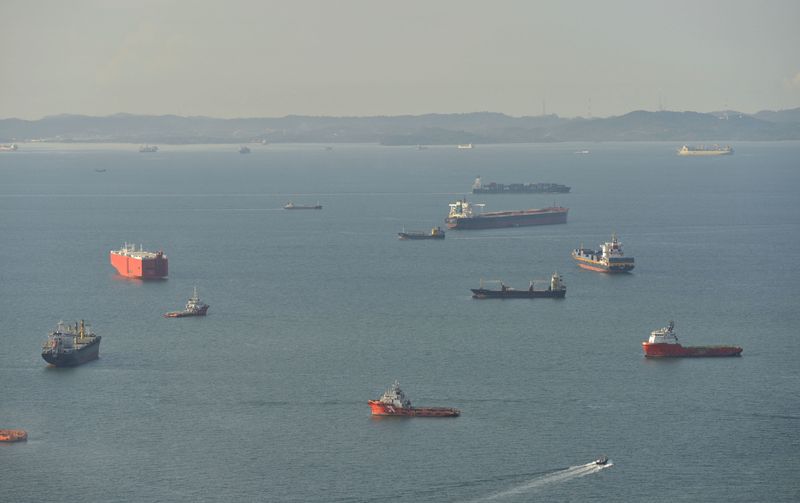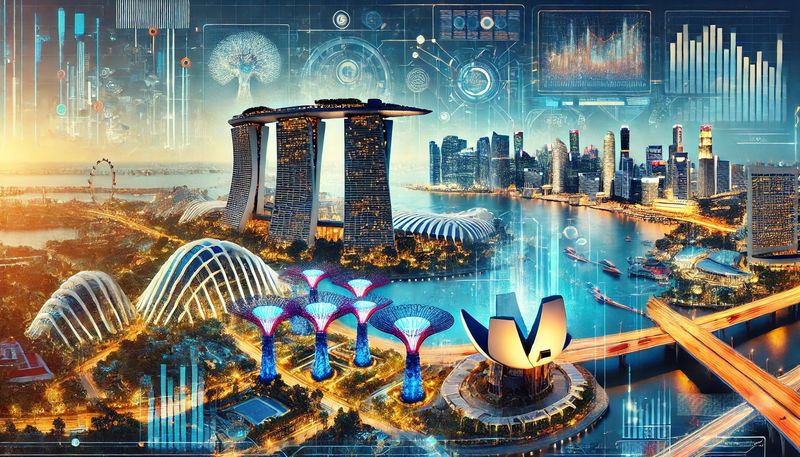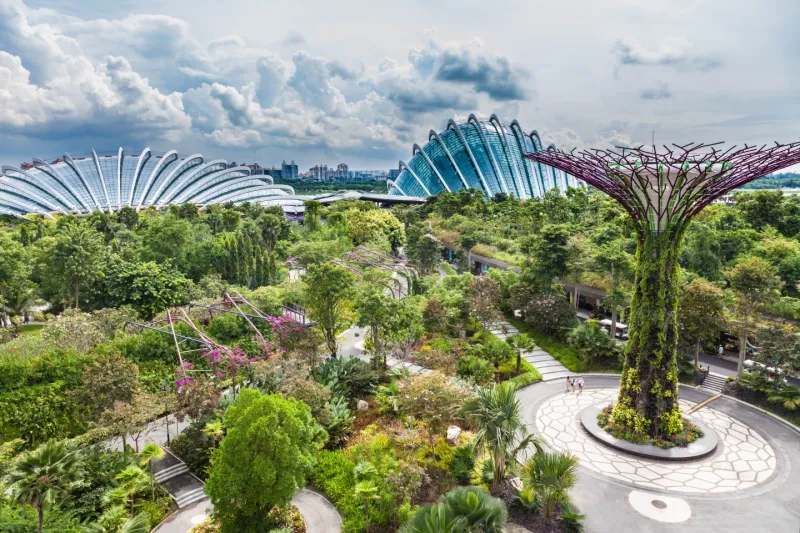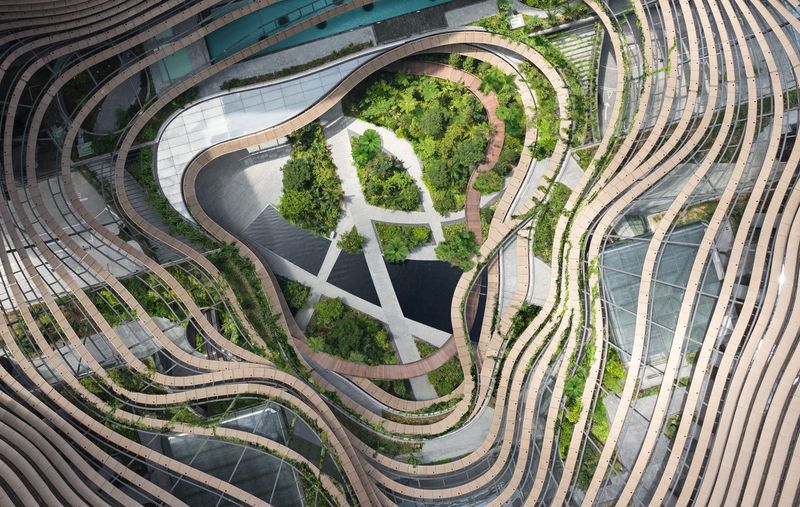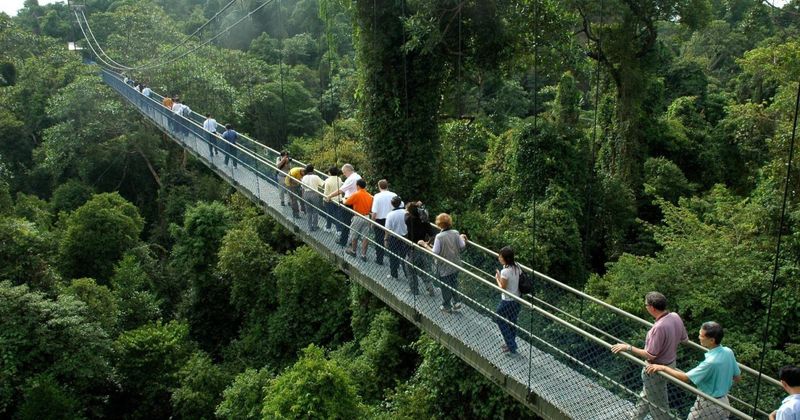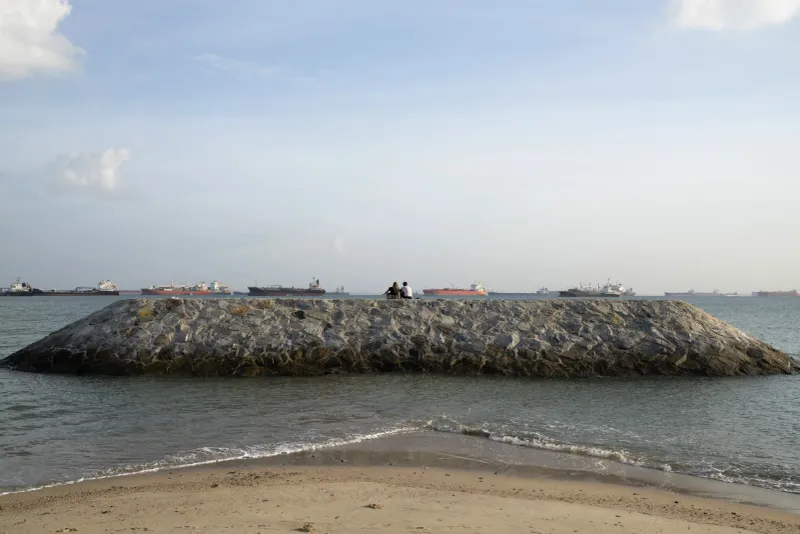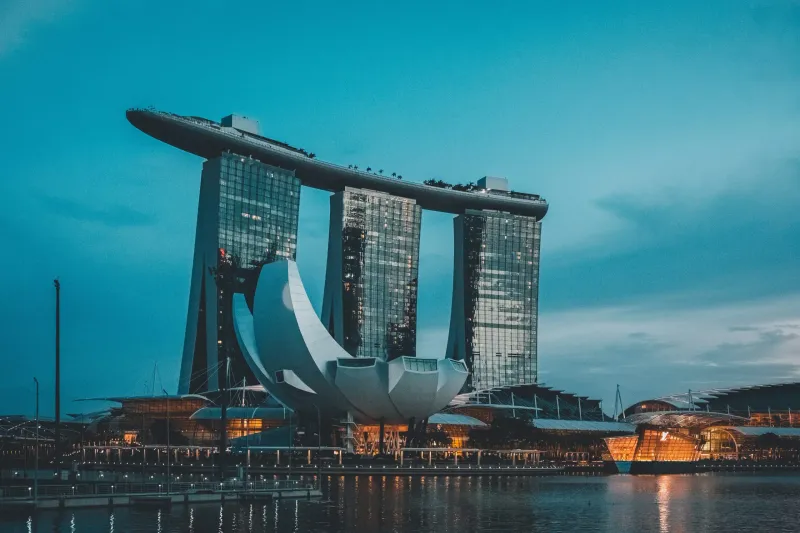Singapore is a place that seems almost impossible. In just a few decades, this tiny island transformed from a sleepy fishing village into one of the world’s most powerful economies. Today, it’s a gleaming city where skyscrapers meet vertical gardens, and where careful planning turned scarcity into strength.
1. From Fishing Village to Global Hub
Long before its skyscrapers and international acclaim, Singapore was essentially a small settlement of coastal communities, including the orang laut (sea-gypsies) around the mouth of the Singapore River. These fishermen and traders lived simple lives, barely imagining what their island would become.
In 1819, Stamford Raffles landed and negotiated a treaty with the local Sultanate to establish a British trading post. This marked a turning point in Singapore’s trajectory, opening doors to international commerce.
Today, the city-state occupies just 719 square kilometers, but it punches well above its weight in trade, finance, and innovation. The contrast is breathtaking.
2. Strategic Geography Equals Smart Growth
Singapore sits at the southern tip of the Malay Peninsula, a key chokepoint on ancient maritime trade routes between India, China and the rest of Southeast Asia. Geography gave this island a head start that visionary leaders knew how to use.
That location enabled it to become a major port, attracting merchants, shipping and eventually global trade. Ships from every corner of the world dock here daily.
Because it lacked natural resources (no big oil fields, little arable land), the nation deliberately focused on human capital, manufacturing, logistics and services. Scarcity forced creativity, and creativity built prosperity.
3. A Miracle of Development in Decades
After independence in 1965 (when Singapore separated from Malaysia), the government launched intensive strategies of industrialization, infrastructure build-up, education and foreign investment. Leaders like Lee Kuan Yew bet everything on smart planning and hard work.
Between 1965 and the early 1970s, the economy grew by double digits annually, thanks to incentives for foreign firms and export-led manufacturing. Factories sprouted, jobs multiplied, and hope replaced uncertainty.
The result: what once was a modest port-town became a high-income, globally connected city-state in the span of a few decades. Few places have transformed so fast.
4. The Garden City Turns Into City in Nature
As growth exploded, Singapore realized that livability and sustainability needed to keep pace. So from the late 20th century onward, it undertook a bold greening of the city that amazed the world.
In 1967, the Garden City vision was promoted to plant trees and clean up the urban environment. More recently, the nation launched its Singapore Green Plan 2030, a multi-agency roadmap with pillars like City in Nature, Sustainable Living, Energy Reset and Green Economy.
Today, nearly half the island is covered in green spaces including vertical gardens, rooftop greenery and expansive parks. Concrete and chlorophyll coexist beautifully.
5. Innovation Meets Infrastructure
Singapore not only built parks; it also built world-class infrastructure that supports its status as a global hub. The port of Singapore is one of the busiest in the world, handling millions of containers each year.
There is top-tier air transport, logistics and business services that make doing business here seamless. Buildings follow high-eco standards, with green roofs and mandatory green building codes since 2008.
The combination of efficient government, rule of law, strategic planning and investment made this leap possible. Infrastructure here isn’t just functional; it’s forward-thinking and environmentally conscious at the same time.
6. Travel-Friendly and Green-Conscious Destination
For the traveler, Singapore offers a unique blend of ultra-modern cityscape and accessible nature. Urban parks and green corridors ensure that even in a dense city, you can find nature just minutes from downtown.
Sustainable tourism is recognized here; Singapore aims to be a model of how cities can grow while staying livable. Hotels, attractions and transport systems all emphasize eco-friendly practices.
Because much of the growth was planned, the city is clean, safe and well-connected—all pluses for visitors. You can explore rainforest trails in the morning and dine in a Michelin-starred restaurant by evening.
7. What to Keep an Eye On
No place is perfect, of course. Singapore still faces major challenges that test its resilience daily. Land is extremely limited, so any growth means difficult trade-offs between housing, industry and green space.
Native forests and ecosystems were severely reduced long ago; many green spaces are planted or re-engineered rather than truly wild. Conservationists worry about biodiversity loss.
Climate change and sea-level rise pose existential risks for a low-lying island-state. The Green Plan takes this seriously, investing billions in coastal defenses and adaptive strategies to protect future generations.
8. Why Your Visit Matters
Visiting Singapore is not just about seeing a city; it’s witnessing a unique experiment in urban transformation. Few places on Earth have changed so dramatically in such a short time.
As a travel blogger, you can highlight how a place can transform fast with vision and investment. Nature and urban density can coexist, rarely seen so comprehensively elsewhere.
Every plaza, every park, every skyscraper tells part of the story of how this city-state remade itself. Your visit becomes a lesson in what’s possible when ambition meets careful planning and respect for the environment.
